Composite Cryogenic Propellant Tank
Composite Material with Excellent Hydrogen Gas Barrier Characteristics
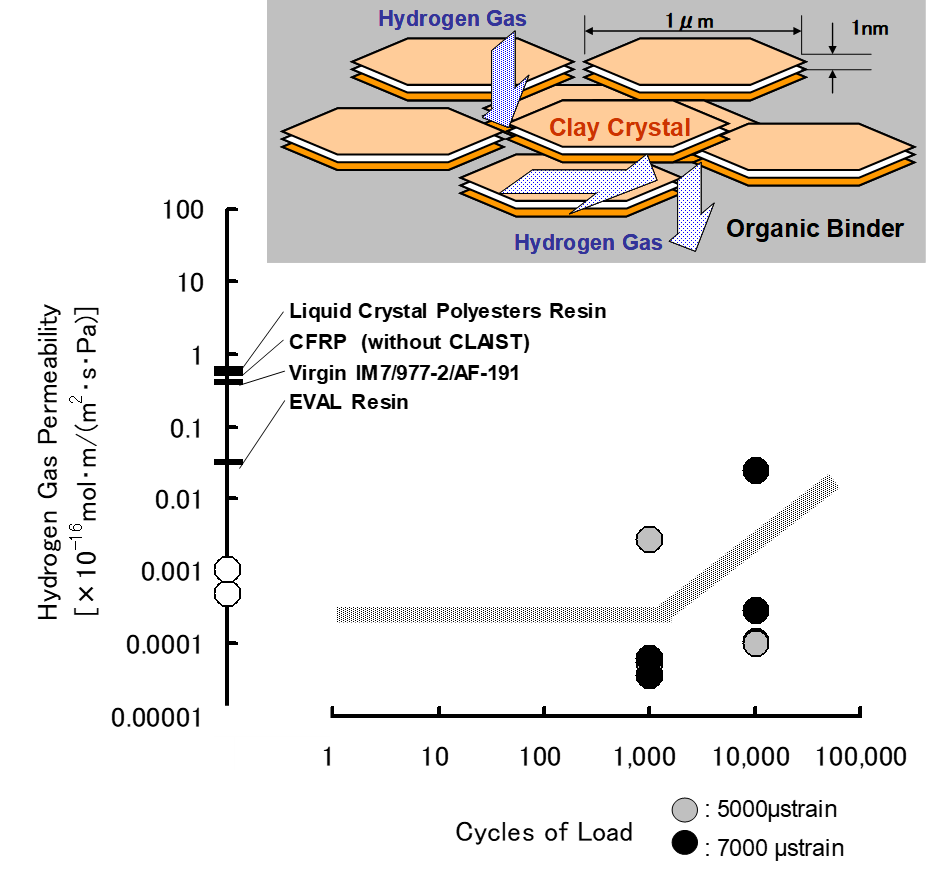 Composite material with excellent hydrogen gas barrier characteristics by laminating a clay film “Claist®” with high hydrogen gas barrier properties has been invented.
Composite material with excellent hydrogen gas barrier characteristics by laminating a clay film “Claist®” with high hydrogen gas barrier properties has been invented.
- United States Patent, US 7,981,500 B2, July 19, 2011, “Carbon Fiber Reinforced Prepreg of Gas Barrier Properties, Carbon Fiber Reinforced Plastics and Method of Producing the Same”
Composite High-pressure Hydrogen Gas Tank with Superior Gas Barrier Characteristics
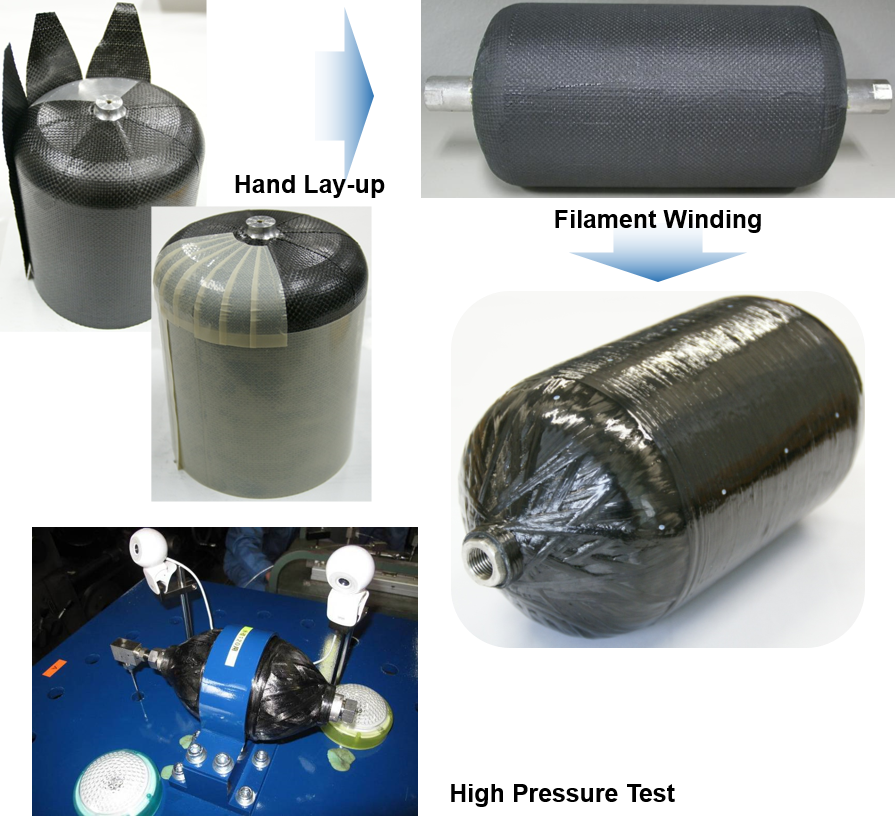 A liner (inner tank) was first laminated by hand lay-up using the composite material with excellent gas barrier properties and cured in an autoclave, and then reinforced by filament winding.
A liner (inner tank) was first laminated by hand lay-up using the composite material with excellent gas barrier properties and cured in an autoclave, and then reinforced by filament winding.
Tank specifications
Operational pressure 70 MPa
Inner volume 4.3 L
Length 380 mm
Outer diameter 170 mm
Composite Liquid Hydrogen Tank with Superior Gas Barrier Characteristics
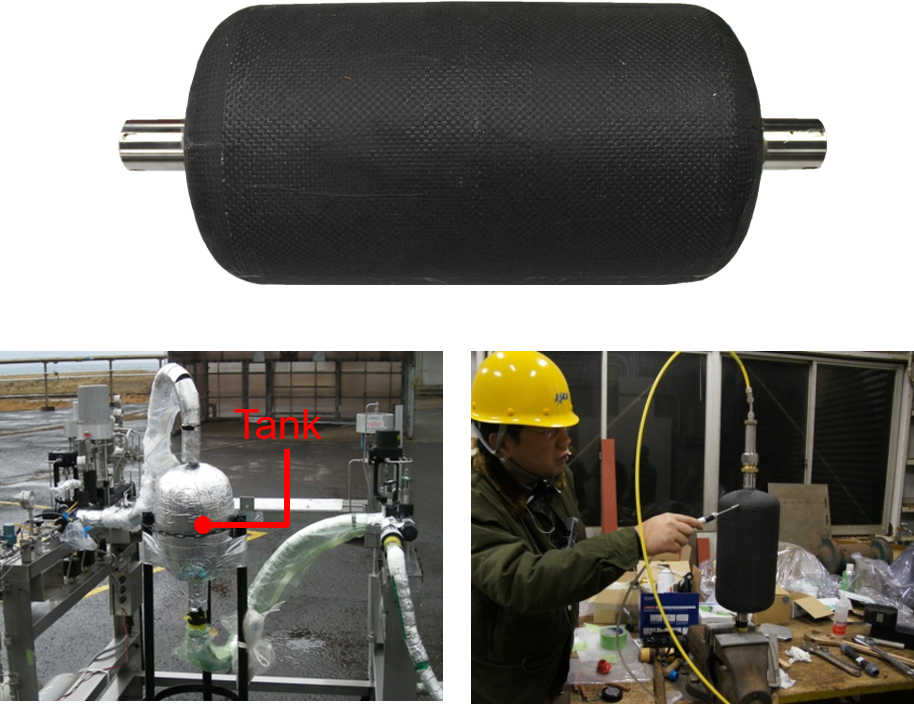 A liquid hydrogen with excellent gas barrier properties tank was prototyped in an autoclave, which was laminated by hand-laying up using a male molding die.
A liquid hydrogen with excellent gas barrier properties tank was prototyped in an autoclave, which was laminated by hand-laying up using a male molding die.
Liquid hydrogen filling test with the pressure of 2 MPa was conducted, and a helium leak test was also performed to confirm no leakage.
Tank specifications
Operational pressure 1.2 MPa
Inner volume 4.3 L
Length 380 mm
Outer diameter 170 mm
Liquid Oxygen Compatibility (Impact Ignition) Test Complying with American Society for Testing Materials ASTM D 2512-95
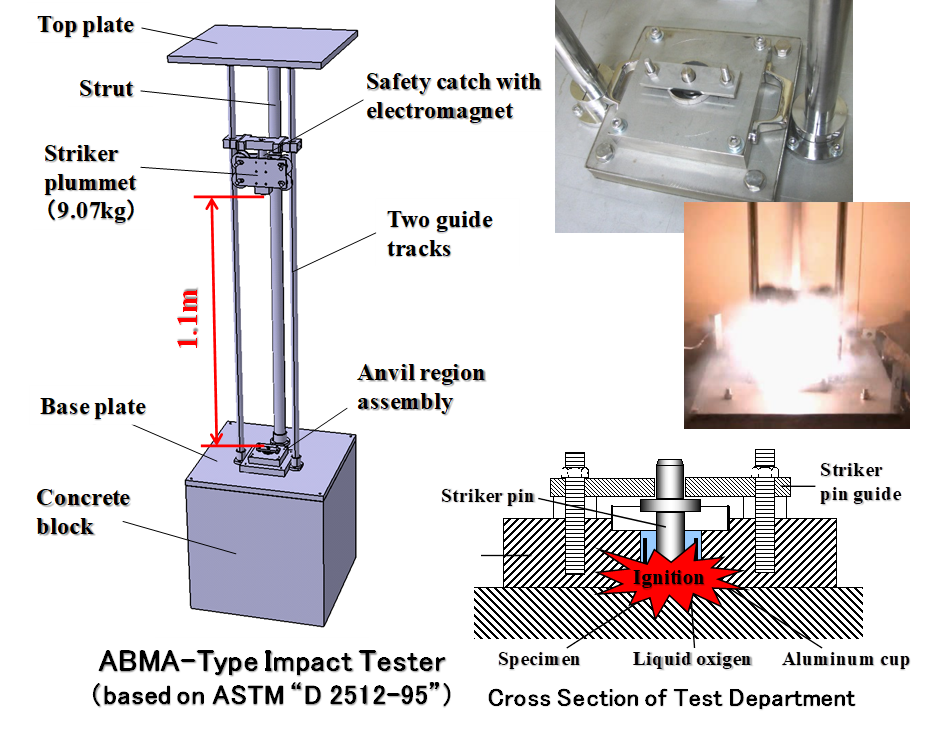 The compatibility with container materials for liquids with strong oxidization such as liquid oxygen is evaluated by the ABMA-Type Impact Tester.
The compatibility with container materials for liquids with strong oxidization such as liquid oxygen is evaluated by the ABMA-Type Impact Tester.
Impact Ignition Characteristics of Carbon Fiber
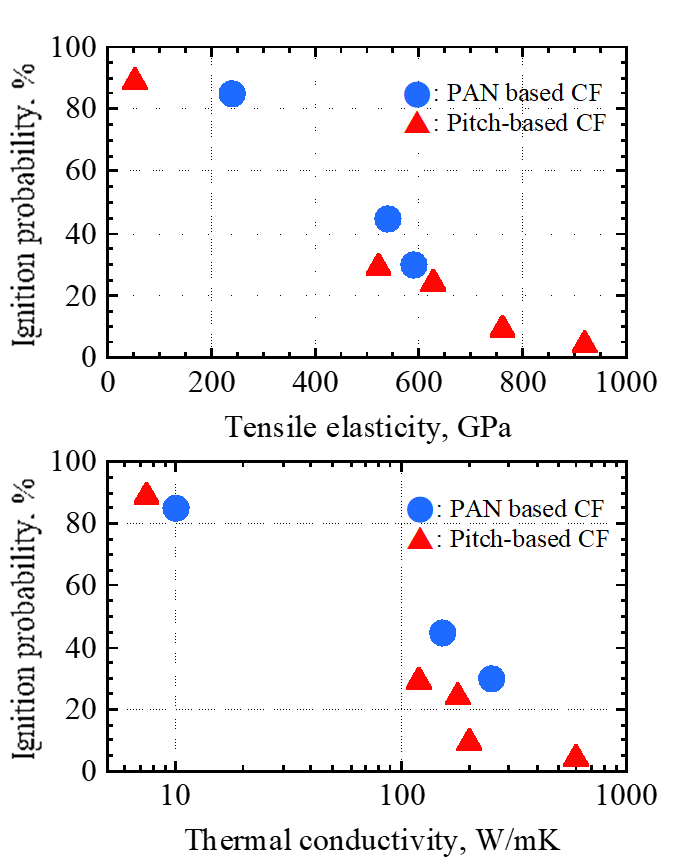 The higher the tensile modulus of carbon fiber, the lower the impact ignition rate.
The higher the tensile modulus of carbon fiber, the lower the impact ignition rate.
Since there is a correlation between the tensile elastic modulus and the thermal conductivity, the friction energy due to the impact is dissipated by the thermal conduction of the carbon fiber itself, so that the combustion energy biding with oxygen becomes insufficient and impact ignition is less likely to occur.
Impact Ignition Characteristics of Plastics
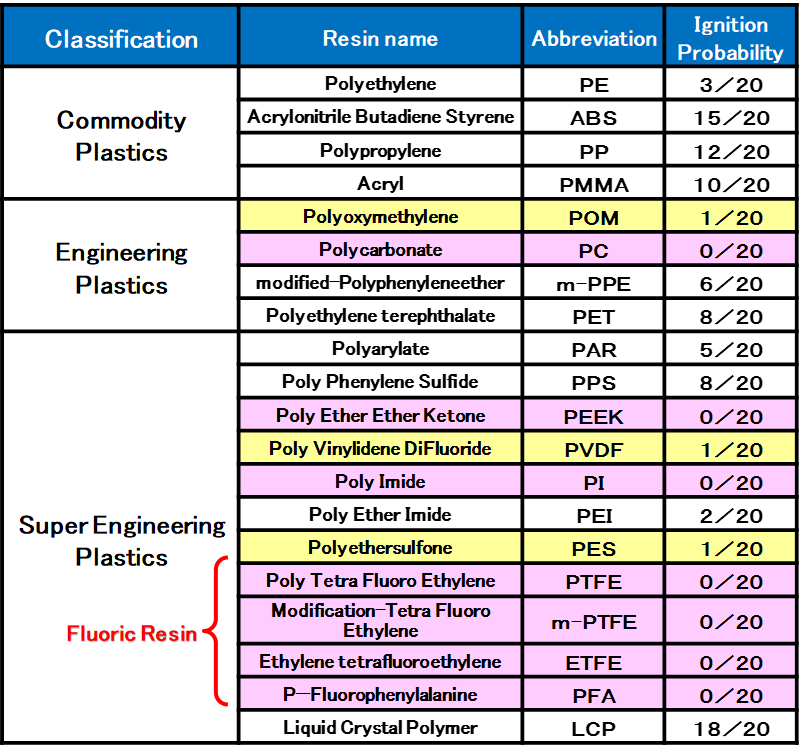 Among many plastics, PC (Poly Carbonate), Poly Ether Ether Ketone), PI (Poly Imide), PTFE (Poly Tetra Fluoro Ethylene), ETFE (Ethylene Tetra Fluoro Ethylene) and PFA (Per Fluoroalkoxy Alkane) are turned out to be compatible with liquid oxygen.
Among many plastics, PC (Poly Carbonate), Poly Ether Ether Ketone), PI (Poly Imide), PTFE (Poly Tetra Fluoro Ethylene), ETFE (Ethylene Tetra Fluoro Ethylene) and PFA (Per Fluoroalkoxy Alkane) are turned out to be compatible with liquid oxygen.
A patent has been applied for the invention of “Fire-retardant CFRTP (Carbon Fiber Reinforced Thermoplastic)”, which is a combination of high elasticity pitch carbon fiber and liquid oxygen compatible plastics. (Patent Application No.17016).
The “Fire-retardant CFRTP“ is also applied to USA, China, France and Germany by PCT (Patent Cooperation Treaty).
CFRTP-PC(Carbon Fiber Reinforced Thermoplastic-Poly Carbonate)Curved Surface of Liquid Oxygen Tank Curing Test
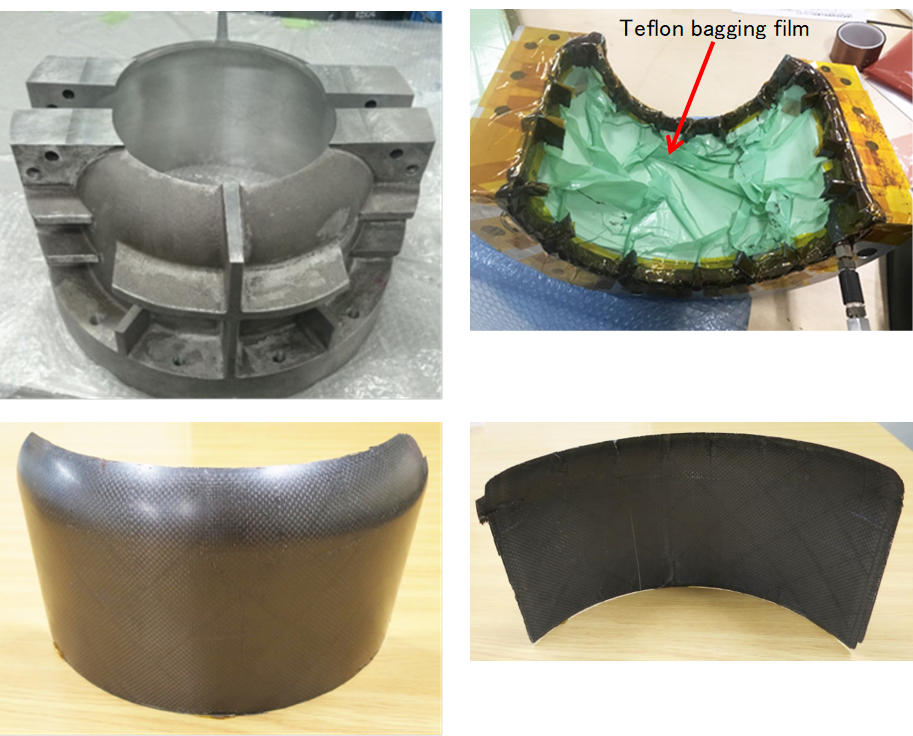 Using a mail molding die made of aluminum alloy, CFRTP-PC was hand-laid up and cured in an autoclave to evaluate the formability of the curved surface of liquid oxygen tank.
Using a mail molding die made of aluminum alloy, CFRTP-PC was hand-laid up and cured in an autoclave to evaluate the formability of the curved surface of liquid oxygen tank.
Partial Structural Test near the Mouthpiece of Composite Liquid Oxygen Tank
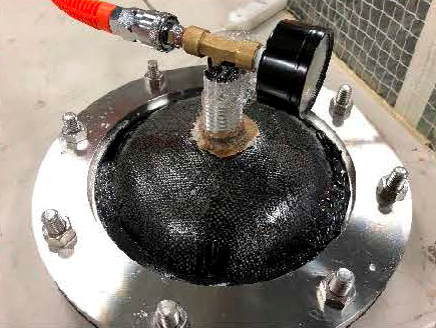 A partial structure near the mouthpiece of composite liquid oxygen tank was manufactured using CFRTP-PC, and the leak test was performed. As a result, there was no particular problem such as leakage.
A partial structure near the mouthpiece of composite liquid oxygen tank was manufactured using CFRTP-PC, and the leak test was performed. As a result, there was no particular problem such as leakage.

